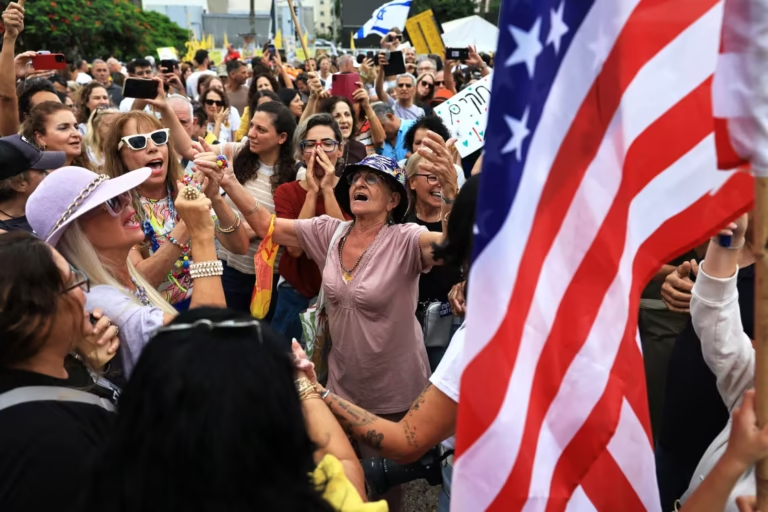
200 U.S. Troops to Oversee Gaza Ceasefire Under Trump Peace Plan
๐๏ธ CENTCOM Coordination Center
U.S. Central Command will establish a specialized coordination facility in Israel to work alongside international partners in monitoring the ceasefire agreement. The center will serve as the primary hub for civil-military operations related to the peace plan’s implementation.
The deployment represents a significant U.S. commitment to ensuring the success of the ceasefire and marks the first major American military presence dedicated to Gaza peace operations since the conflict began nearly two years ago.
๐ Multinational Oversight Coalition
In addition to U.S. forces, the coordination center will include military officers and civilian experts from four key regional partners:
These nations played crucial roles as mediators during the ceasefire negotiations and will now contribute personnel to ensure the agreement’s successful implementation.
๐ Phase One Implementation
โฐ Next 24 Hours
Israeli Cabinet to vote on the ceasefire agreement. Upon approval, the ceasefire takes immediate effect.
๐ 72-Hour Window
Staged release of hostages begins. First group expected to be freed within this timeframe.
๐ Early Next Week
White House expects the first hostages to arrive home. Simultaneous release of Palestinian prisoners from Israeli custody.
๐ Ongoing Operations
Large-scale humanitarian aid convoys begin entering Gaza under multinational supervision.
๐ฏ Trump’s 20-Point Peace Plan: Key Elements
- Immediate Ceasefire: All hostilities cease upon Cabinet approval
- Hostage Release: Full release of all 48 remaining hostages in phased approach
- Prisoner Exchange: Hundreds of Palestinian detainees to be freed from Israeli prisons
- Troop Withdrawal: Phased pullback of Israeli Defense Forces from Gaza territory
- Humanitarian Corridor: Unrestricted aid access through multinational supervision
- Civilian Authority: Establishment of new Palestinian governing body
- Hamas Disarmament: Negotiated in later phases (marked as “non-negotiable” by Trump)
- Reconstruction Plan: International support for rebuilding Gaza infrastructure
๐ Roles and Responsibilities
๐บ๐ธ United States (CENTCOM)
Lead coordination of multinational oversight operations, provide logistical support, monitor compliance with ceasefire terms, and facilitate communication between Israeli and Palestinian parties.
๐ช๐ฌ Egypt
Manage southern border crossings, coordinate aid deliveries through Rafah, and provide regional mediation support. Egypt hosted the final signing of phase one.
๐ถ๐ฆ Qatar
Continue diplomatic engagement with Hamas leadership, facilitate negotiations for subsequent phases, and contribute to humanitarian relief efforts.
๐น๐ท Turkey
Coordinate with regional partners, provide humanitarian assistance, and support reconstruction planning efforts.
๐ฆ๐ช United Arab Emirates
Contribute to humanitarian operations, support infrastructure rebuilding initiatives, and provide technical expertise for civilian governance.
โ ๏ธ Challenges Ahead
While the first phase focuses on the ceasefire and hostage release, significant challenges remain:
- Hamas has not agreed to disband its military wing
- Long-term governance structure for Gaza remains unclear
- Marwan Barghouti will not be released in first exchange
- Northern Gaza remains designated as “dangerous combat zone”
- Timeline for full Israeli troop withdrawal not specified
๐ฅ Humanitarian Response
The World Health Organization and United Nations have pledged to scale up operations immediately following the ceasefire implementation. The coordination center will work closely with these organizations to ensure aid reaches affected populations.
After nearly two years of conflict that killed over 67,000 Palestinians according to Gaza’s Health Ministry and left much of the territory in ruins, the humanitarian needs are immense. International agencies are preparing for the largest relief operation in the region’s recent history.
๐ข International Community Response
UN Secretary-General Antรณnio Guterres welcomed the deployment, stating that the multinational oversight mechanism “provides essential credibility and accountability to the peace process.”
The European Union has committed โฌ500 million in humanitarian aid and reconstruction support, contingent on successful implementation of the ceasefire’s first phase.
๐ฎ What Comes Next
As the world watches the implementation of phase one, attention is already turning to the more difficult negotiations ahead. Phase two will need to address:
- Hamas’s military capabilities and disarmament
- Permanent governance structure for Gaza
- Long-term security arrangements
- Reconstruction and economic development plans
- Pathways toward a broader Israeli-Palestinian peace process
The success of the multinational coordination center in overseeing phase one will be crucial in building trust for these more challenging negotiations.
About The Author
Discover more from Faith & Freedom News - FFN
Subscribe to get the latest posts sent to your email.



